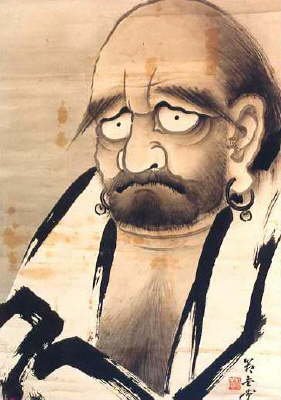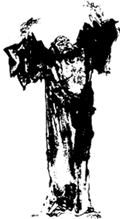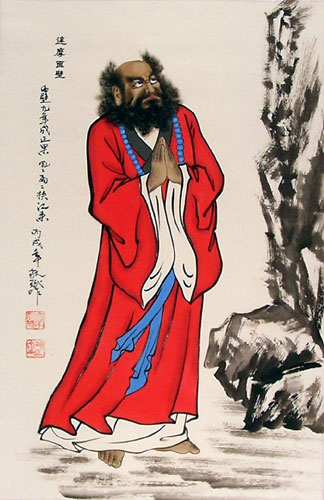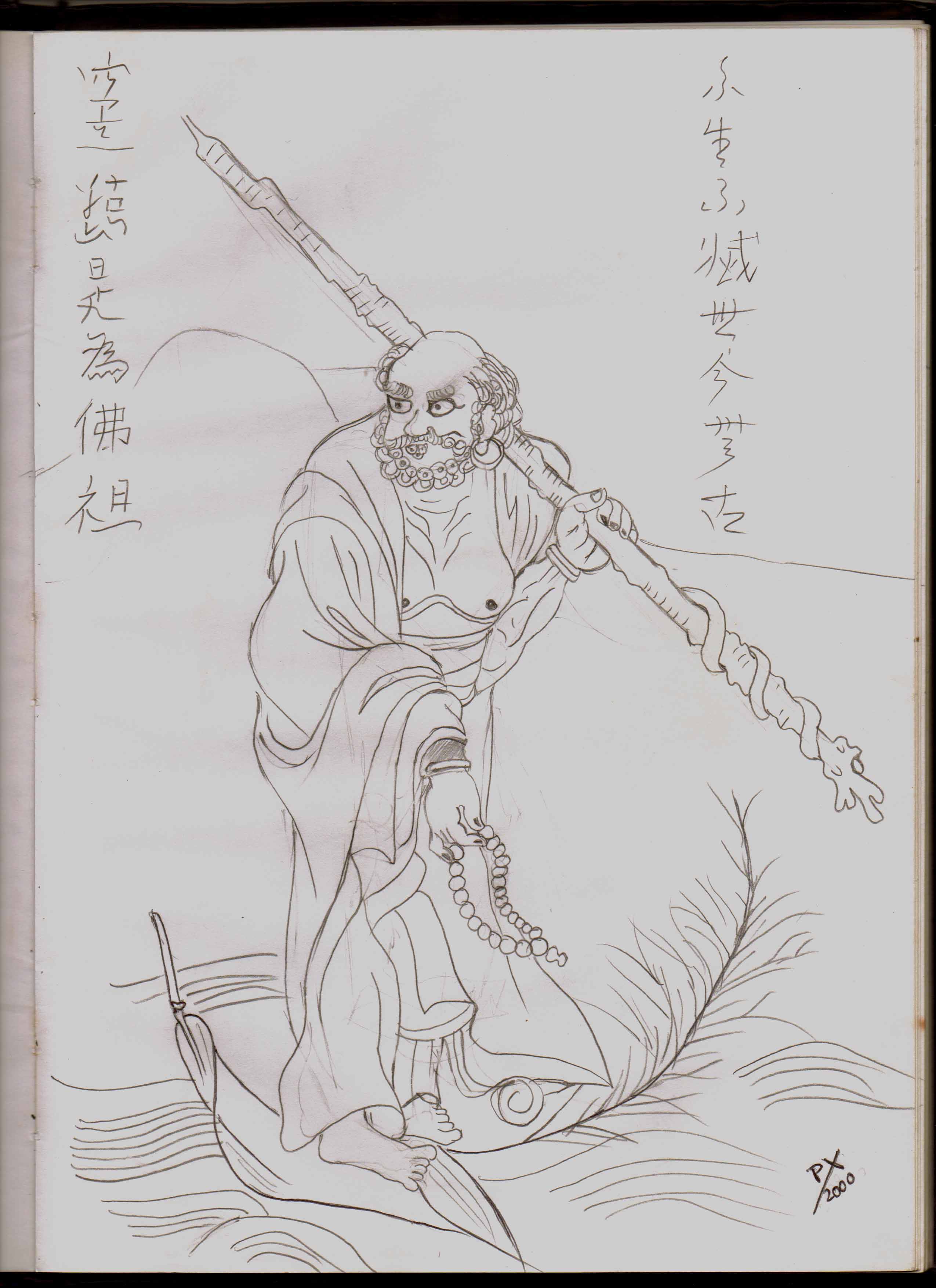 |
Buddhas don't save Buddhas.
-Attributed to Bodhidharma |
|---|
BODHIDARMA HISTORY
This wall-gazing old barbarian monk
Has eyes that exceed the glow of the evening lamp;
His silence has never been challenged-
His living dharma extends to the present day.
Bodhidharma, Damo or Daruma to the Japanese, was the 28th Indian patriarch and first patriarch of Zen Buddhism in China. He was reputedly of South Indian Brahman heritage, perhaps even of royal blood.
As an old man he undertook a mission to China to fulfil the wishes of his dying master to bring Buddhism to China.There are many stories and legends about this sage and his connection to Shaolin Temple. The Buddhism taught at the Shaolin Temple eventually became known as Ch'an, or Zen in its Japanese reading.
The primary aim of Zen Buddhsim is personal enlightenment, and according to Bodhidharma, enlightenment cannot be found in books or sutras or in performing rituals. Rather, it is to be found within the self through meditation. Bodhidharma taught that within each of us is the Buddha, and that meditation can help us remember our Buddha nature. By clearing our minds of distracting thoughts, by striving for a mental state free of material concerns, we will rediscover our lost but true Buddha nature.
* * *
BODHIDHARMA'S LEGENDS
Bodhidarma meets the King
One legend has it that Bodhidharma walked from India to China; after a long and arduous journey he had an audience with Emperor Wu (502-550 A.D.) founder of the Liang dynasty. The Emperor was well known for spending on Buddhist temples, hospitals, schools and other public works. He asked Bodhidharma..............:
"What merit have I accumulated for all my works?"
Daruma replied "None."
"Ok then, what is the meaning of the Dharma (Buddhist teachings)?"
"Only emptiness, nothing sacred."
"Who stands before me?"
"I don't know."
Bodhidarma pointed to the futility of building Buddhist temples and reciting sutras. His Buddhism emphasized that it was the task of the individual to awaken to his own true nature, the Method being meditation, inner discipline and intuitive insight. the emperor didn't understand the answers. Of course, these replies infuriated the emperor and he ordered Bodhidharma to leave his palace. Da Mo simply turned and walked out of the palace.
Bodhidarma travels to Shaolin Temple
COPY PAINTED BY PRISCILLA SCHIRMANN FROM A STONE IN SHAOLIN PX SHAOLIN/2000 |
Next Bodhidharma travelled north, teaching throughout the country. A popular legend claims he crossed the Yangtze River on a reed to get there. This is often depicted in images of him . After travelling and teaching throughout the country he ultimately settled at Shaolin-si (Shorinji), a budhist monastery on Song-shan mountain near Loyang, in what is now Henan province. The legend says that Bodhidharma remained seated in meditation facing a wall on top of the Shaolin Monastery in a cave for nine years "until his legs and arms withered away" |
|---|
Cutting off his eyelids
Legend also credits Bodhidharma with cutting off his eyelids. Apparently he dozed off during meditation, and in anger, he cut off his eyelids, which fell to the ground and sprouted into China's first green tea plants.
And the snow turned red
He took no disciples until one monk cut off his arm to prove his sincerity in relieving his suffering. This disciple was Master Hui K’o, who was seeking enlightenment and hearing of Bodhidharma's reputation asked him for help. Bodhidharma ignored him but still he would not leave and spent seven days and nights outside the gates of the temple in the snow. Bodhidharma said that he would not accept Hui K'o as a disciple until the snow turned red. To demonstrate the depth of his dedication and sincerity Hui K'o cut off his arm, with the blood turning the snow red. He was immediately accepted as a disciple and eventually became Bodhidharma's successor.
(This Legend led the Shaolin monks to salute with one hand to show respect to Hui K'o)
Shaolin kung fu begun
Back at Shaolin Temple, Damo discovered that the monks were in very poor physical condition and could not sit for the long meditation sessions demanded by his regimen. |
 |
|---|
Bodhidharma's dead and Resucitation
There's another interesting legend that 3 years after Bodhidarma died he met a Chinese official in central Asia. According to the legend, he told the official he was returning to India and he was carrying a single shoe. The resulting controversy caused the monks to open Bodhidharma's grave where only a single shoe was found. Whatever the actual facts are, this led to yet another popular depiction of Bodhidharma as travelling with a single show in toe, as in the Qing Dynasty figure on the right.
Bodhidharma passed away in 543 AD. It is said he was buried in Shon Er Shan (Bear Ear Mountain) in Ho Nan, and a stupa was built for him in Pao Lin Temple. Later, the Tang dynasty Emperor, Dai Dzong, bestowed on Bodhidharma the name Yuen Che Grand Zen Master, and renamed his stupa as Kong Kwan (Empty Visualization).Some accounts mention that Bodhidharma lived for 150 years.]
His main teaching which has impacted Zen was taken from Vajrasamadhi Sutra:
” Be at rest in all things and seek nothing, for Buddha-hood
is attained by perceiving ones own true nature.”

The practice of meditation, according to him, was the key to awakening ones inner nature, compassion and wisdom
* * *
